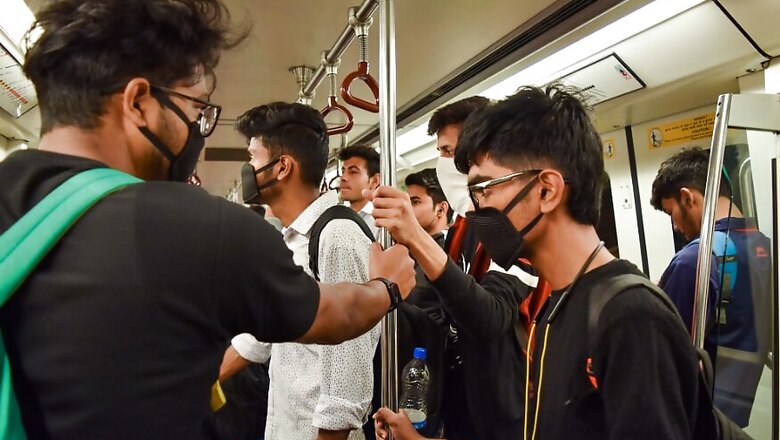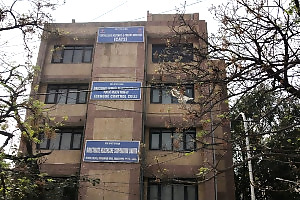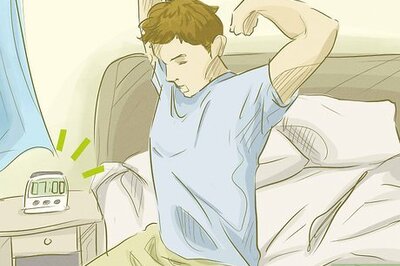
views
New Delhi: Tucked away on a street near Laxmi Nagar Metro station intersection here, stands the Dengue Control Cell building. Unknown to many, the four-storey building houses the state's IDSP office — the centre of Delhi government's ongoing efforts against coronavirus.
The Integrated Disease Surveillance Programme (IDSP) office, while small, wore a busy look on Thursday. Employees were seen attending to calls referred from the state COVID-19 helpline. Others were engrossed compiling information on quarantined people.
The person leading these efforts is Dr Sher Singh Kashyotia — state surveillance officer of IDSP and additional director Public Health Wing-IV, Delhi. He took charge at IDSP just days before the Centre announced Delhi’s first positive coronavirus patient.
Between attending multiple calls and tasking people with work, Kashyotia explained how IDSP is working with the state’s district-level machinery to trace those who have come in contact with infected people.
“We're the nodal agency responsible for coordinating efforts across all 11 districts of the city," he said.
While people are now being screened by thermal scanners at most airports in India for symptoms of coronavirus, the disease is known to be asymptomic as well. But Delhi is prepared.
“We are also responsible for ensuring that district medical officers and surveillance units are tracking people who may have been asymptomatic at airports,” Kashyotia says.

The Dengue Control Cell building. (Nikhil Ghanekar/News18)
As on Friday evening, three Delhi residents tested positive for COVID-19. While one person is a resident of Mayur Vihar, the other is from Uttam Nagar. Details of a third patient could not be ascertained.
Travelling Virus
The state machinery traced 74 people in Delhi who had come in contact with these three. All of them, save two, were put under home isolation.
These two people displayed symptoms of coronavirus and are now quarantined at Ram Manohar Lohia Hospital, the designated spot for coronavirus patients in the capital, said Delhi government sources.
The third Covid-19 positive case was reported Uttam Nagar and he had travelled to Malaysia and Thailand. Samples of seven members of his family were collected, sources added.
Not too far from IDSP, stands the office of east Delhi’s Chief District Medical Officer in Surajmal Vihar. Located above a government dispensary, the office was tasked with tracing people who came in contact with the patient from Mayur Vihar.
Working along other district offices, it traced 41 such people from Delhi. The CDMO office also coordinates with the district task force headed by the district collector, to share information and coordinate efforts.
Monitoring Symptomatic and Asymptomatic People
Kashyotia explained that each of the 11 districts in Delhi has a district surveillance officer (DSO) as part of the district surveillance unit. The DSO is in-charge of supervising the work of healthcare workers from Delhi government dispensaries.
The healthcare workers have the daily job of contacting those residents who have returned from foreign trips. They have to especially keep a track of those who have returned from countries affected by coronavirus.
“When passengers are screened at the airport, they have to provide details of the countries they visited along with personal details. These lists are provided to IDSP and each district surveillance unit.
Using the contact details provided, our health workers from government dispensaries contact them on phone or visit the addresses in case their phone numbers are not reachable immediately,” said a district level doctor on the condition of anonymity.
As per the containment plan, surveillance teams had conducted house-to-house survey of 50 households in the vicinity of the third case who resides in Uttam Nagar.
In east Delhi, where the index patient resides, multipurpose health workers and ASHA (Accredited Social Health Activist) workers from 16 dispensaries are engaged in efforts against coronavirus. Soon after the index patient reported about developing flu symptoms, his family members comprising his wife, mother and two children were contacted.
The private clinician who examined the index patient was also contacted, and tested negative for the virus.
After contacting them personally or through phone, the health workers are supposed to call up those under surveillance or home quarantine, twice a day. “They are asked if they are developing any flu-like symptoms. The workers also counsel them and have to reiterate the procedure to be followed and the people they should contact in case they develop symptoms," the district level officer added.
If a person under surveillance develops symptoms, they are to be provided a special ambulance to take them for testing.
“We have been given lists of passengers who have come back from foreign trips since January 15. As of Friday, 356 passengers staying in east Delhi was given to us. Among them 277 were found asymptomatic,” said a senior official from the CDMO office on the condition of anonymity.




















Comments
0 comment